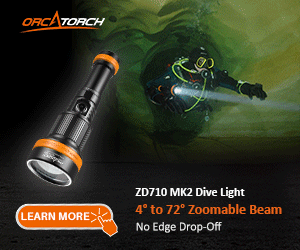back again on the new lens:
I am a little puzzled on the possibilities of the new lens and this in relation to the 8mm fisheye:
- both are +/- same price
- the 8mm is a 'real' fisheye: angle 180 degrees
- the 9-18 has probably an max angle of 110 (I saw that the angle of the 'unaffordable' 7-14mm was 75 - 114 degrees, on the Belgian site there is mentioned that the angle of the 9-18 is 65 °, but this for the 18mm-side probably)
If I had to chose (I want to buy one) between the 8mm fisheye and the new one 9-18mm for underwater photography what is now really the best choice. For sure you can use/enjoye the 9-18 also above the water, which is not the case for the 8mm.
Probably also important if you consider the extra cost of the port: the 8mm needs a dome port, the 9-18 probable a less expensive port (not dome)
But what to do if you only consider the possibilities underwater ?
tnks
jan
I'm assuming the 9-18 is a rectilinear like the 7-14. So while you lose a little bit of view angle, you gain by not getting the distortion to straight lines. A lot of people post that the fisheye effect isn't that bad for underwater shots since most of what you shoot is 'organic' and not rectilinear anyway, but imaging a shot of the leg structure on an oil platform dive, or a wreck, and you can certainly see the interest in avoiding the fisheye distortion effect as well.
I really don't think you'd want to use the 9-18 behind a flat - any more than you would the 7-14. Domes preserve view angles at the cost of image distance, flat ports exchange field of view for magnification. Putting an extreme WA lens behind a flat would defeat the purpose...you'd be just as well off sticking with the 14-54 behind your dome, I guess.
p.s. just read on DPreview that the 9-18 will be compatible with the EC14 and EC20 teleconverters. What exactly would be the benefit of using a WA lens with something that has the effect of doubling its focal length...vs using a middle-wide standard lens in the first place ???






